To many people, New Mexico conjures the image of arid brown landscapes and year-round sunny skies, a dry, almost sub-tropical paradise.In fact, the topography of New Mexico produces an amazing variety of climates and microclimates. Mile-high Albuquerque is arid and mostly a desert-like grassland, just north of the true Chihuahuan Desert, but it experiences one or two blizzards every year. Total annual snowfall in Albuquerque averages 9.6 inches, and total precipitation is about 9 inches.
Sandia Mountain produces its own weather. The sheer west face lifts the prevailing wind and wrings out the moisture that produces the verdant green forests of the gentle east slope. Annually, 58 inches of moisture and about ten feet of snow are recorded at the 10,678 foot Sandia Crest. We lived about halfway up the eastern side, at 7000 feet, where snowfall averages 58 inches and total precipitation is 19 inches annually. The deeply shaded forest floor often retains its snow drifts into mid-June.
If you have been following our ROSYFINCH.COM home page, you know that the rosy-finches by the hundreds are visiting snow-swept Sandia Crest. The past few weeks have been so cold up at the top of the Sandias that the Crest House Restaurant has had to cope with frozen water supply lines and drains. Only about two feet of snow have fallen so far, but if you venture off the paved road, you may encounter much deeper drifts.
Christopher Taylor visited the feeders last week and provided these excellent images of the three rosy-finch species. He gave me permission to exhibit them here. Visit his gallery for more views.
This year, the Brown-capped Rosy-Finch (pictured above) has shown up in greater numbers than in previous years. The adult male is distinguished from its Gray-crowned Rosy-Finch counterpart by its brown chin, uniform dark cap and (often) brighter rose belly and wing coverts.
Both the Interior race of the Gray-crowned Rosy-Finch, shown above, and the Black Rosy-Finch sport black foreheads and sharply contrasting whitish gray hind crowns. The Interior race has brown cheeks, while the light gray extends over most of the head of the Coastal or Hepburn’s race of the Gray-crowned Rosy-Finch, shown in Stephen Fettig’s image, below.
The Black Rosy-Finch is my favorite. The black body accentuates the beautiful extensive pink highlights on its wings and undersides. In all three species, females and young birds are more somber, and the distinctions between them are not as clear-cut as the bird book illustrations indicate. I saw a Hepburn’s race Gray-crowned that was nearly black– it did have brown streaking on its back, but at first glance it seemed to be an aberrant Black Rosy-Finch.
Reflecting light can play tricks as well, and some Brown-capped birds can appear to have more extensive light areas on the crown, causing them to be confused with the Gray-crowned species. See some more examples here. Not uncommonly, it is impossible to identify the species of certain individual rosy-finches in the field.
Note that all the birds photographed at Sandia Crest during the winter have yellow bills. In this respect the rosy-finches are quite the opposite of European Starlings. The latter have black bills all winter, and they turn yellow in the spring and summer. Rosy-finch bills darken up as the breeding season arrives. This US Postage stamp shows the dark bill of a Brown-capped Rosy-Finch during the breeding season.
More of my Blog entries about the rosy-finches at Sandia Crest are aggregated at this link.













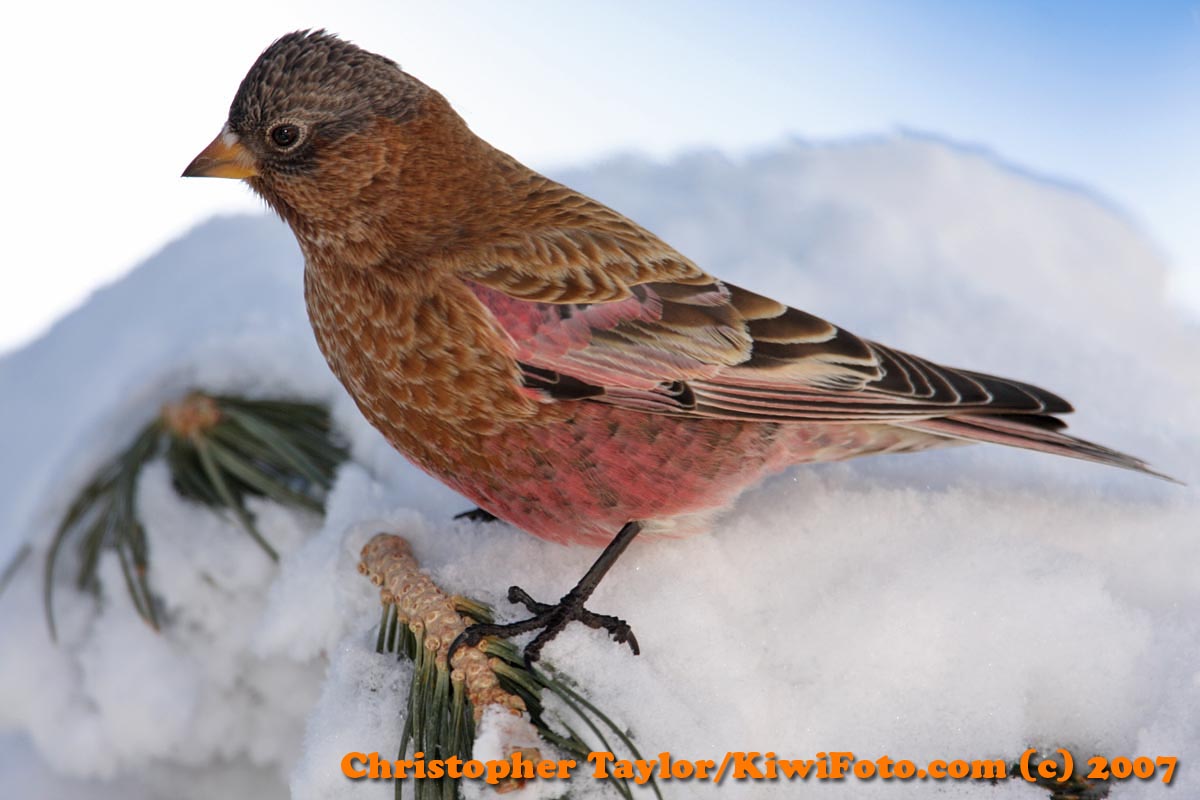
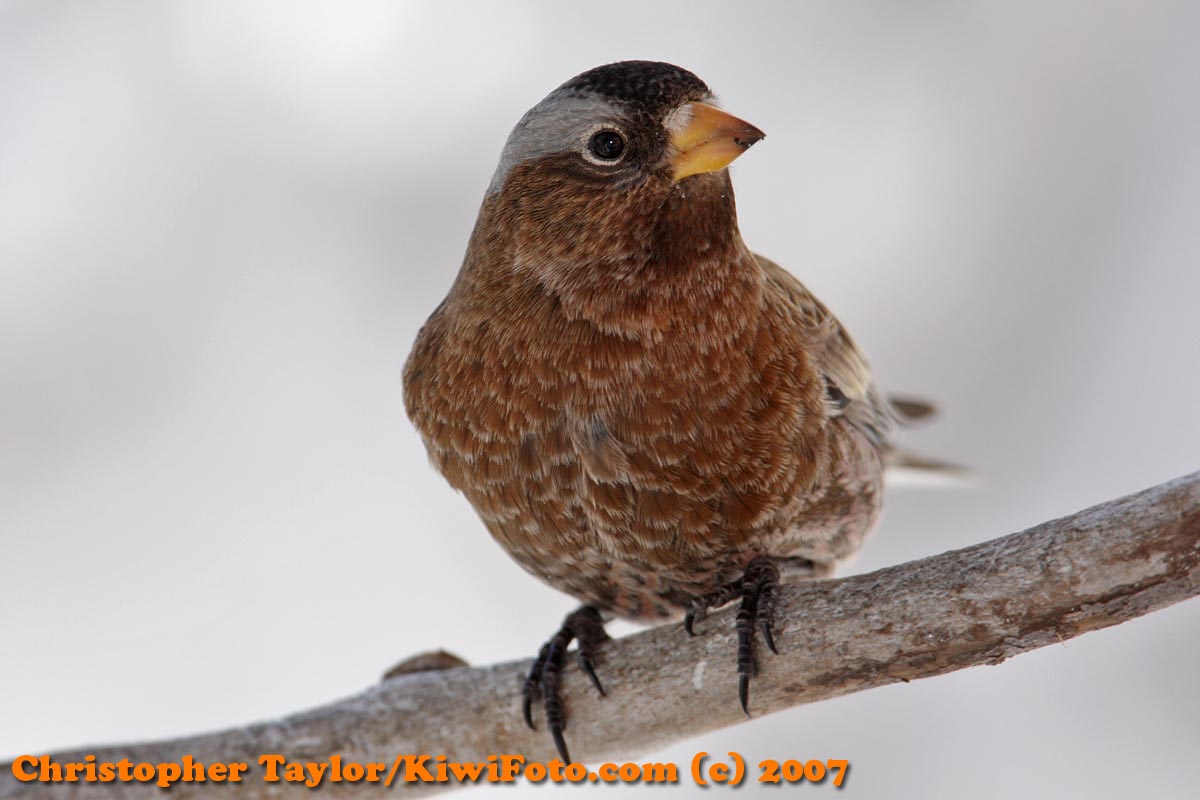
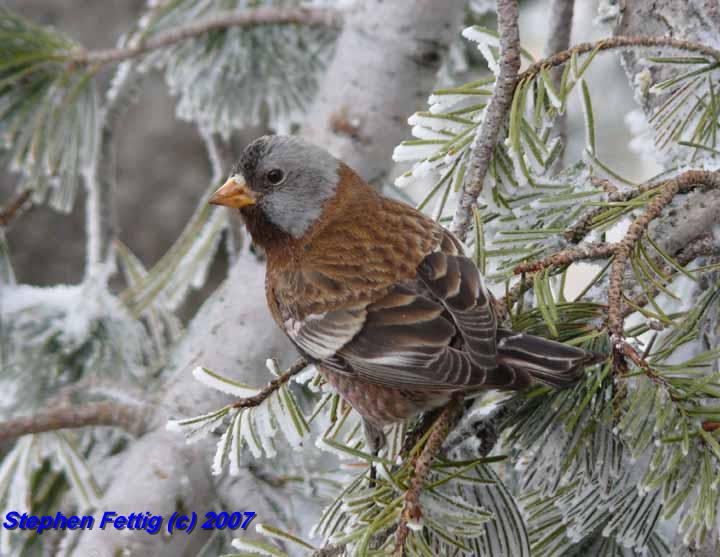
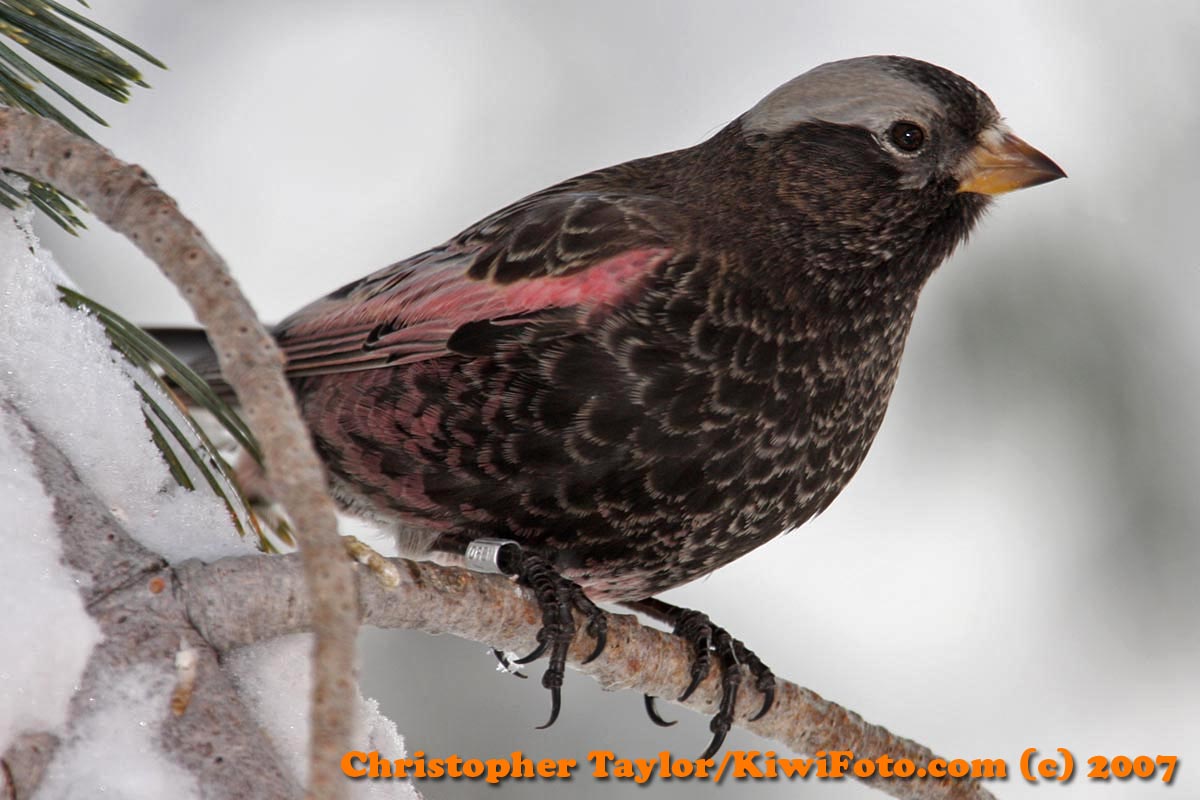
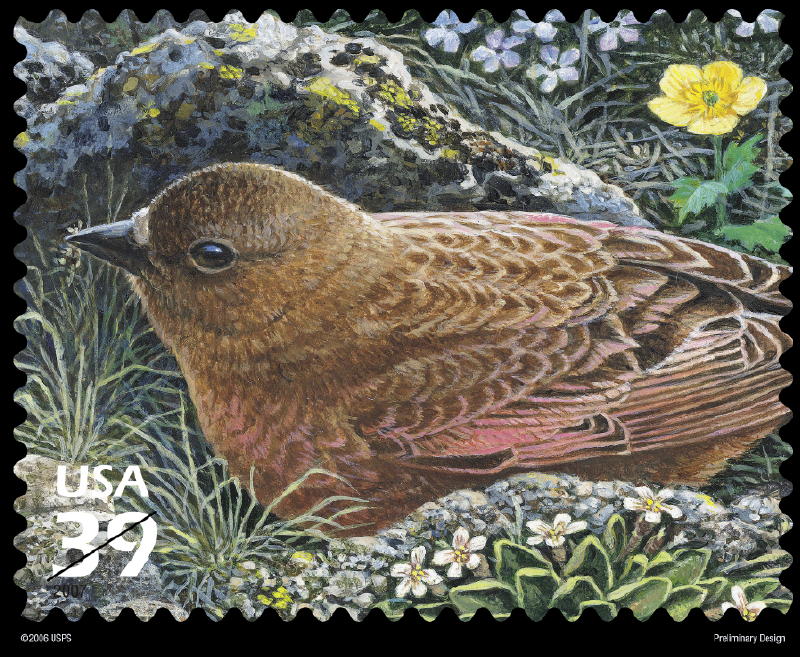
January 4th, 2008 at 12:45 pm Hi Ken, thanks again for linking to my pictures. I had a lot of fun photographing them at Sandia. It was great seeing them in such large numbers compared to previous years. And thanks again for providing such great information and content on your website regarding them.
October 10th, 2010 at 4:00 pm Thanks to Christopher Taylor for his beautiful photos of the finches!